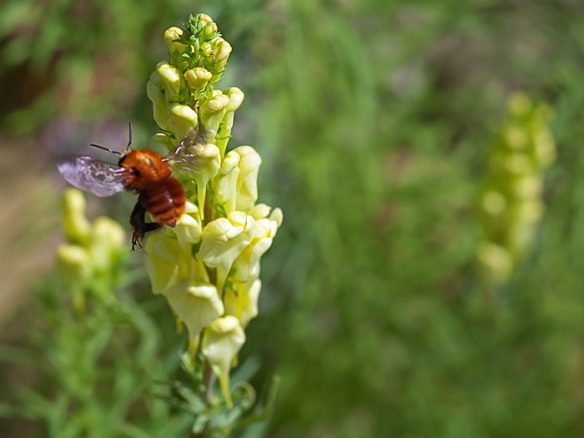
I took this photo of a Common Carder-bumblebee (bombus pascuorum) a few days ago during a walk along the river Arno. She has just left a “difficult” yellow flower, called Common Toadflax or Yellow Toadflax (Linaria vulgaris) where a honey bee would not have succeed plunging into the gullet of the flower allowing the top petal to fully enclose her. Only a heavy and strong insect such as a bumblebee (Bombus species) can get into such flowers and suchly impollinate them.
Bumblebees are lovely little creatures – their bright stripes and gentle buzz bring colour and sound to our summers. They are also very important because they pollinate our wildflowers and crops. Sadly things aren’t going well and some species are threatened with extinction.
They are present in most of Europe in a wide variety of habitats such as meadows, pastures, waste ground, road and field margins, as well as gardens and parks in urban areas, but bumblebees are in danger in many developed countries due to habitat destruction and collateral pesticide damage.
One of their obvious characteristics is the soft nature of the hair, called pile, that covers their entire body, making them appear and feel fuzzy. Like their relatives the honey bees, bumble bees feed on nectar and gather pollen to feed their young. Bumblebees are not aggressive at all, but will sting in defence of their nest, or if you annoy them; and they can sting more than once, unlike bees.
According to an urban legend the laws of aerodynamics prove that the bumble bee should be incapable of flight, as it does not have the capacity (in terms of wing size or beats per second) to achieve flight with the degree of wing loading necessary. More accurate studies and calculations in aerodynamics have proved this to be wrong. Bumblebees have known that forever.